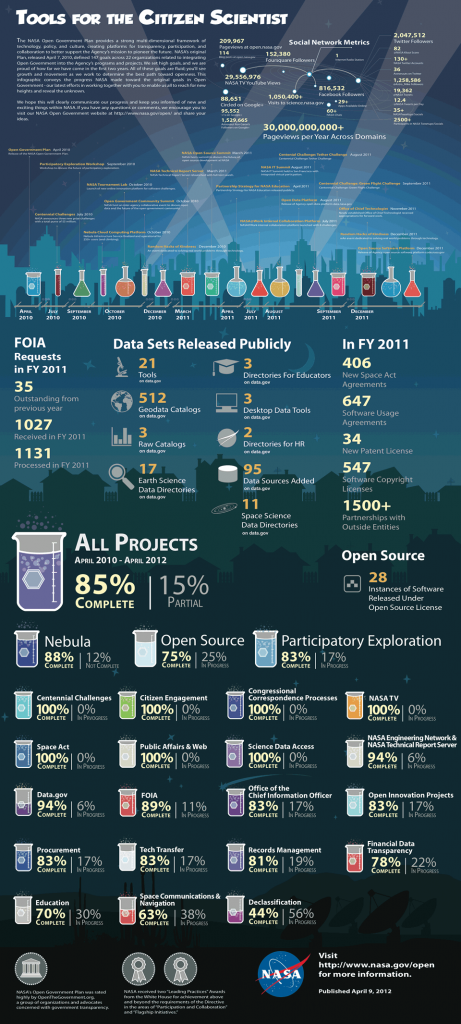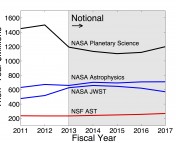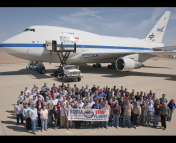Last week NASA successfully landed a car-sized rover on the planet Mars, 150 million miles away from Earth. If that weren’t impressive enough, they managed to land it with an error of less than 2 miles. This was no doubt the culmination of creative cleverness, remarkable engineering, and good ol’ fashioned, unwavering ambition. But there is another contributor that seldom gets the recognition it deserves: The policymakers in Washington D.C., and more indirectly, the citizens of the United States.
In the maelstrom that is the current global economy, and during a time when national debts and deficits are ominously baring their teeth, we the public have decided that a mission to Mars is still important. Even with a price tag of $2.5 billion, we’re happy to bite the bullet and send that spacecraft on a one-way suicide mission for science. We know that it has value, that science advances technology, that grandiose projects like this inspire people to aim higher than ever before, that exploration and discovery are worthy of our attention and our investment.

NASA embraces the citizen science movement and in doing so, advances its three goals of transparency, participation, and collaboration
The tenets of discovery manifest themselves in projects like Curiosity, but they are born in policy. Public policy plays an important role in science these days. In July of last year, the appropriations committee in the United State House of Representatives planned to cut funding to the James Webb Space Telescope–Hubble’s successor. Many of you reading probably remember when this happened; it was very jarring for astronomers everywhere. There was substantial backlash from the international astronomical community and eventually, it was kept in the budget–for now. Not all projects are so lucky, though. The Laser Interferometer Space Antenna (LISA) was a joint partnership between NASA and the European Space Agency (ESA) that would measure gravitational waves, much like a space-bound LIGO. However, NASA has since abandoned the project due to insufficient funding. Their budget in 2011 was a mere $18.4 billion–only 0.53% of the federal budget. These are stern reminders to all of us in science, and astronomy in particular: policy matters.
But public science policy does not only involve finances. It extends much farther beyond that. Science policy makes an effort to educate the public by increasing awareness and allowing involvement. When the United States decided to send people to the Moon during the cold war, NASA enjoyed substantial funding (roughly 3.3% of the federal budget), but also received vast public support. People were excited about what NASA was doing and as a result, participation and enthusiasm in the sciences rose. Engagement is crucial. People need to feel like they’re part of the process.
When President Obama took office in 2009, one of his first actions was to create the Open Government Initiative with the goal of increasing transparency, collaboration, and participation within the government to make it more accessible to we-the-people. All departments and agencies within the federal government were encouraged to develop their own strategic plans to advance these ideals. One agency in particular took the wheel right away and really set the stage for how this initiative should be approached. Can you guess which agency it was? Of course, it was NASA.
NASA immediately created the NASA Open Government Plan, outlining their goals focusing on the three pillars of the initiative: transparency, participation, collaboration.
Transparency NASA has always been a fairly transparent organization, but now they’re taking it a step further. All federal organizations are required to submit a description of how their budget is going to be spent, but NASA is now producing annual performance and accountability reports to summarize how money actually went.
From the non-financial side of things, NASA wanted to make as much of their data available to the public as possible in one convenient, easy to access location. They created data.nasa.gov, the one-stop-shop for all things NASA data. They even have an API(Application Programming Interface) to allow people to access data through self-developed applications rather than the web interface. This is an important aspect of transparency. Not only is the information available, but it’s easy to find and easy to use.
“NASA is expanding transparency, participation, and collaboration and creating a new level of openness and accountability. We are focusing on embedding open government into three integrated aspects of our operations—policy, technology, and culture. Whether NASA is using social networks to allow students to interact directly with astronauts, or creating a Cloud Computing Platform to give unprecedented access to scientific data, we have embraced the Open Government Directive.” – NASA Open Government Plan
Participation NASA has launched code.nasa.gov, a repository of software that NASA is crowdsourcing. Basically, they’re soliciting help with developing their software to anyone who has the knowledge and will to contribute. Open source development is becoming more commonplace these days, and NASA not falling behind. See an example of an application that’s currently being developed by citizen and NASA employees alike called Mission Control Technologies.
Collaboration In April of this year, NASA helped promote and conduct the International Space Apps Challenge. The intent was to challenge developers all across the world (and in space) to come together and “solve current challenges relevant to both space exploration and current need.” The event took place over two days and had the format of the “hackathons” that are gaining popularity across the globe. In the end, contributions came from 25 countries across all of the continents (yes, there were submissions from Antarctica) and the International Space Station. Collaboration at one event from the entire world and beyond: NASA helped make it happen.
The entries from the International Space Apps Challenge can be found here, and are quite inspiring! It’s amazing what one can do with some data and programming know-how. NASA has really taken the lead on the Open Government Initiative. It is making a serious effort and seeing serious results. Citizens are becoming more engaged, informed, inspired, and involved, and it’s all linked to policy. Perhaps the next Space Apps Challenge will see apps showcasing the latest addition to the NASA family: a lonely rover roaming the Martian landscape, another product of public policy pushing the limit and pushing us forward.



